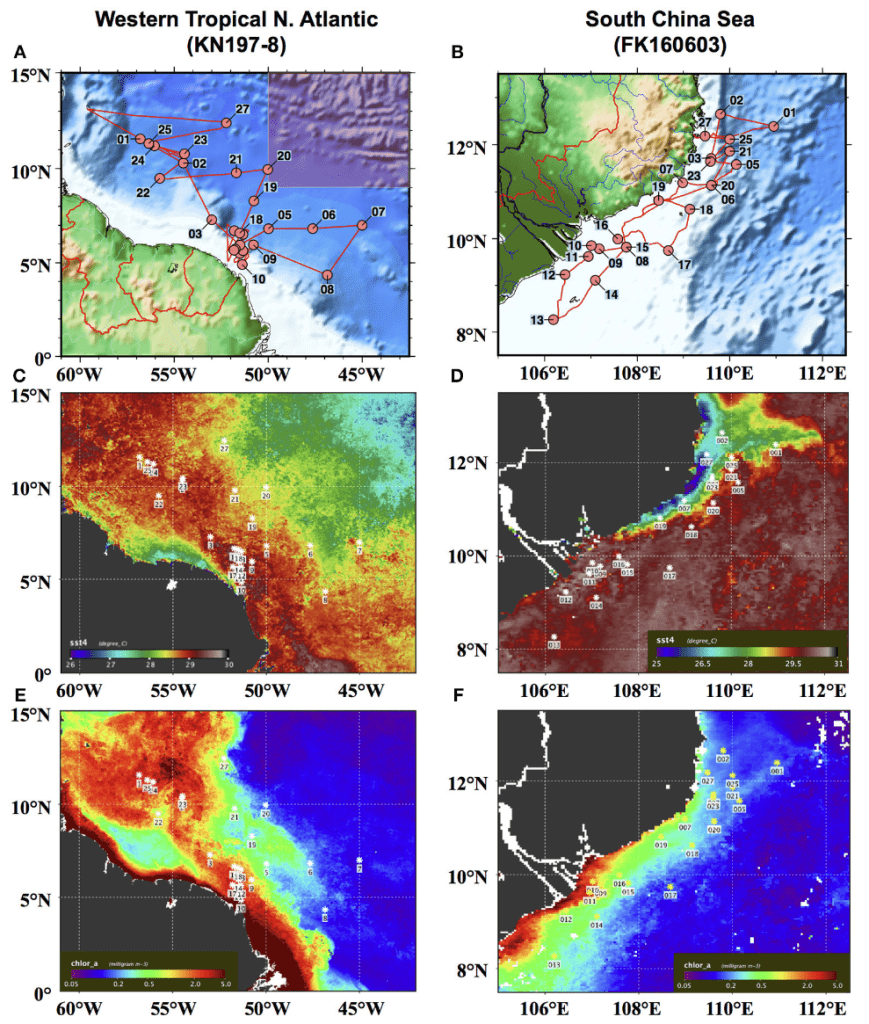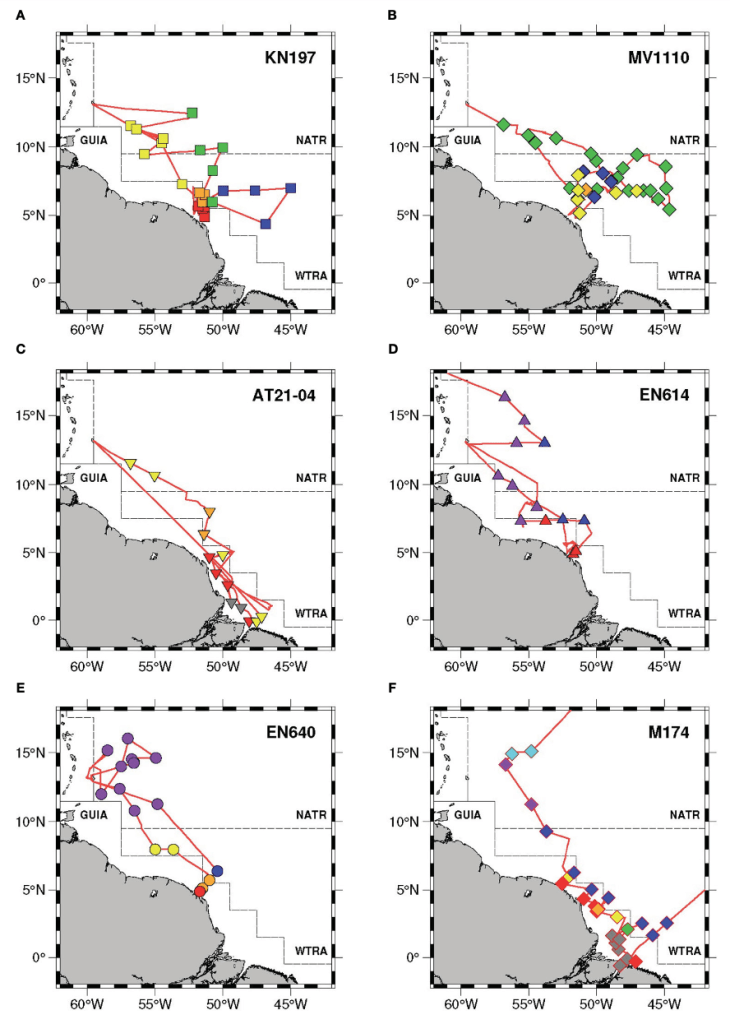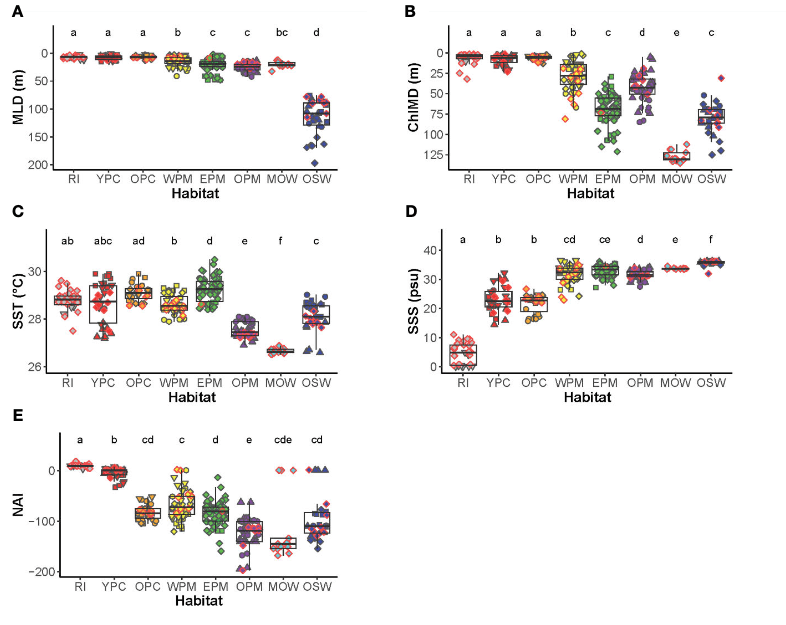We work on various aspects of oceanic ecosystems using a combination of tools and approaches drawn from biological oceanography, stable isotope biogeochemistry, and computational science. Our work is highly interdisciplinary and generally field-oriented, though we often spend years in the lab and at the computer for each month we spend at sea. Recently, much of our work has focused on the Tropical Atlantic and the Gulf of Mexico, though lab members have also taken part in research cruises in the Pacific, South China Sea, and Baltic Sea over the years. Some of our current and recent areas of research include the following:
Phytoplankton habitats in the open ocean
Former lab member Sarah Weber developed a straightforward approach to use standard oceanographic measurements to identify and characterize distinct planktonic habitats. Anh Pham, a current PhD student, has extended and validated Sarah’s approach, drawing on a larger set of research cruises and, more recently, exploiting the BioGeoArgo fleet of autonomous profilers.



Nitrogen- and carbon-fixation in oceanic waters
We have carried out numerous experimental measurements of nitrogen- and carbon-fixation in tropical and subtropical waters of the Tropical Atlantic, Gulf of Mexico, and other waters using stable isotope tracers. These experiments provide a direct measure of the rate of organic matter production and the role of diazotrophy (nitrogen fixation) in supporting the planktonic ecosystem. We’re currently carrying out mass spectrometric analyses of samples from recent cruises, integrating our rate measurements with hydrographic and other data, and writing papers.
Nitrogen and carbon stable isotope biogeochemistry of the open pcean
We measure the natural abundance of 13C and 15N in suspended particles and zooplankton to evaluate the movement of nitrogen and carbon derived from different sources into the plankton.
Sargassum
The abundance of pelagic Sargassum in the Tropical Atlantic has increased dramatically since 2010. We are exploring the distribution of nitrogen, carbon and phosphorus in Sargassum tissues using samples collected over broad spatial scales during recent cruises.

